Normally, anyone guilty of cutting up a beautiful supercar such as the Audi R8 would have us looking to perform the same treatment on the perpetrator. In this case, however, we'll let the crime go unpunished, since this peak under the skin of Ingolstadt's new Autobahn burner gives us a chance to admire it for more that just its looks.
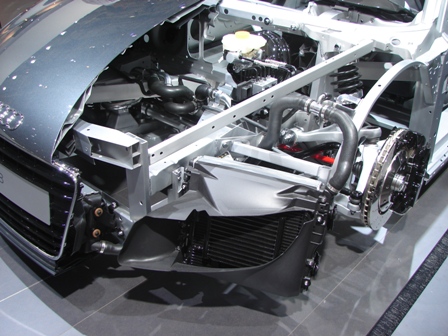
Every prior Audi has placed the engine up front, but not the R8. Not clearly visible are the front halfshafts and differential for the Quattro all-wheel-drive system.
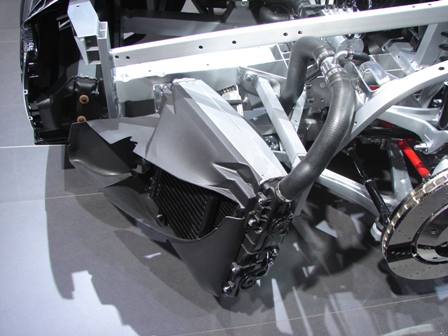
Cooling an aerodynamic high-powered mid-engine car is quite a challenge. The R8 accomplishes this via a pair of remote-mounted radiators that are nestled behind the front fascia. Additional ductwork behind the fascia creates a gently diverging shape that will slow down the airstream while increasing its pressure, thereby maximizing its ability to absorb energy from the heat exchangers.
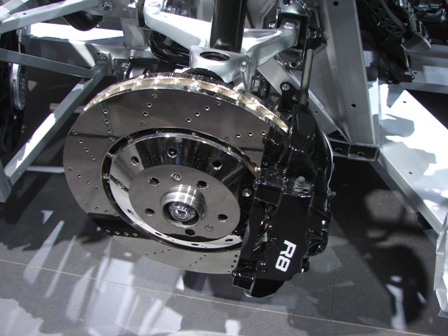
The short-long-arm (SLA) arrangement uses a pair of forged aluminum control arms to define the kinematic path of the front suspension. The coil-over shocks use magneto-rheological (MR) fluid, which consists of soft iron particles suspended in oil. By changing the applied magnetic field, the viscosity of MR fluid can be changed from watery to nearly solid in mere milliseconds.
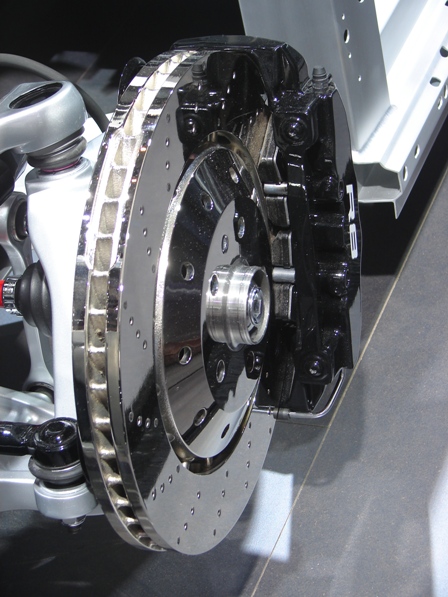
The brake calipers appear to be one-piece (monoblock) parts with eight pistons apiece, clamping down upon a set of four pads and a huge ventilated and cross-drilled disc of about 14" in diameter (just don't expect chrome plating on the production version). Wheel bolts are used instead of studs, in that decidedly German fashion.
The steering rack is mounted in front of the axle centerline, likely to keep it clear of the occupant's feet during collisions.
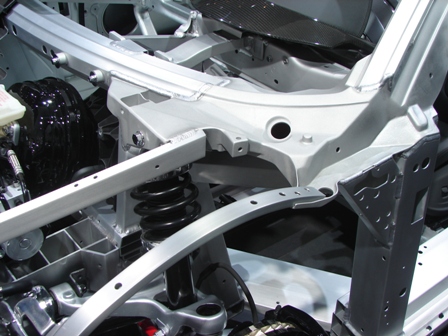
The R8's structure is based upon the Audi Space Frame (ASF) concept, which brings together aluminum and magnesium in the form of vacuum castings, extrusions, and stampings. The foundation of the R8's front half is this large casting, which ties together the firewall, A-pillar, and roof arch while also serving as a shock tower.
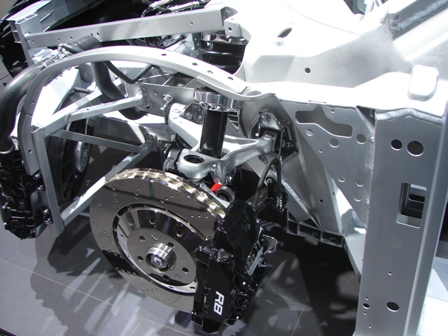
Affixed to this casting are extrusions that run to the crash beams located at the front of the car, as well as a large header running along the lower edge of the windshield.
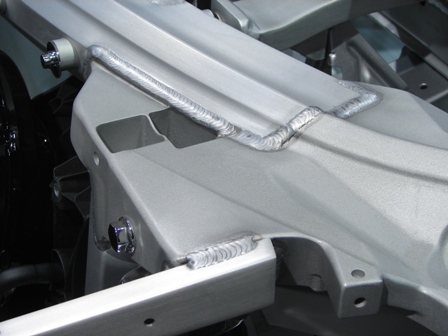
Note the lovely TIG welds that are used to join the various pieces of the structure. We're not sure if this is the intention for production (being a labor-intensive process), or if robotic MIG welding with laser pre-heating will be used as is the case for higher-volume versions of Audi's ASF structures. Other components, such as the beam running along the wheel arch, appear to have been attached using self-piercing rivets.
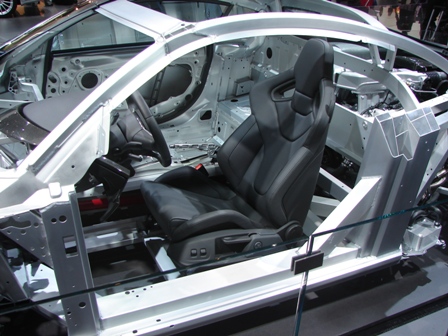
The space frame concept continues on to the passenger compartment, surrounding the occupants in a cage of aluminum extrusions.
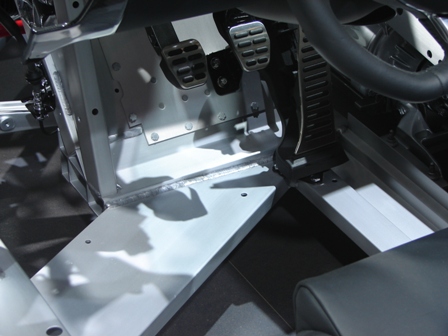
The clutch and brake pedals swing from the top, while the accelerator pivots from the bottom (yet another German peculiarity). Note the large beam that runs below the driver's feet to tie the bottom of the firewall structure into the door sills.
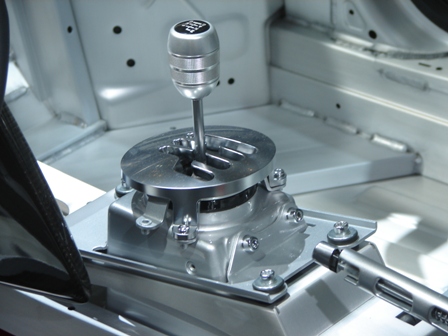
While some R8s will get the eGear automated manual transmission, this particular sample had a conventional 6-speed manual. Perched on the center tunnel is a gorgeous shifter, topped with a bezel that gives it the appearance of external gating (of course, the actual gates are internal to the the transmission itself for maximum precision and smoothness). Even the cast aluminum E-brake handle looks expensive.
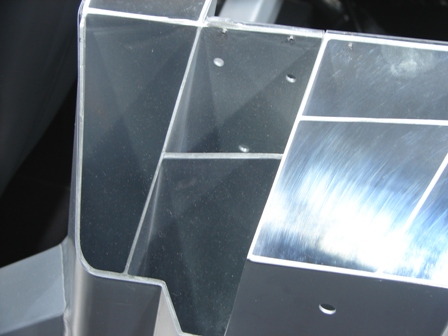
Sitting behind the doors is a huge extrusion with several internal walls (the odd glare at the right of this photo was caused by the reflection from a piece of polycarbonate that capped the cutaway). Such a component should provide immense strength and stiffness.
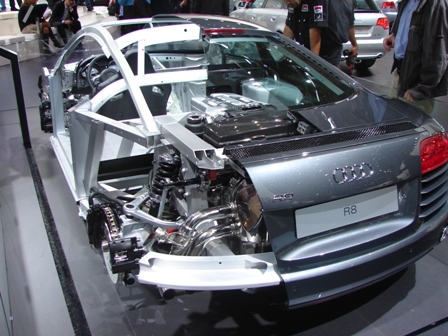
This mid-engine configuration places the 4.2L V8 in front of the rear axle centerline, with the transmission and transfer case assembly mounted behind the motor.
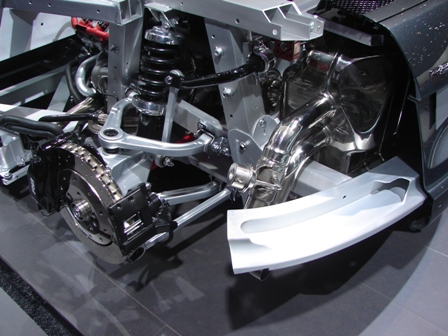
Another set of forged aluminum control arms reside out back, along with a toe link. This can be used to provide toe-in upon compression, which in turn can help tame the tail-happy characteristics of mid-engine vehicles.
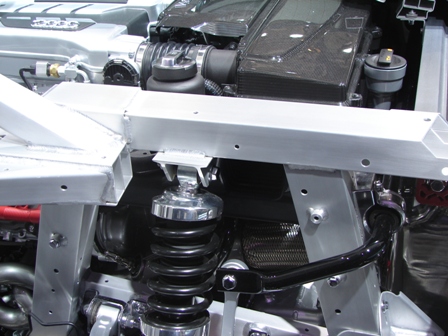
The rear coil-over shocks - also electronically adjustable via the wonders of MR fluid - are mounted to an extruded spar running along the upper edge of the engine bay.
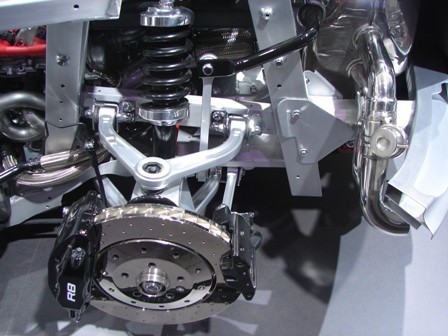
Note the high-mounted anti-roll bar and its long aluminum links that connect to the aluminum knuckle.
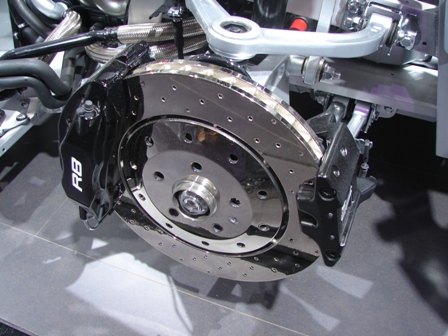
The rear brakes get slightly smaller monoblock calipers, but the ventilated and cross-drilled discs themselves are still massive (for good reason, given the rearward weight bias). The tiny caliper at the opposite side of the disc serves as the parking brake.
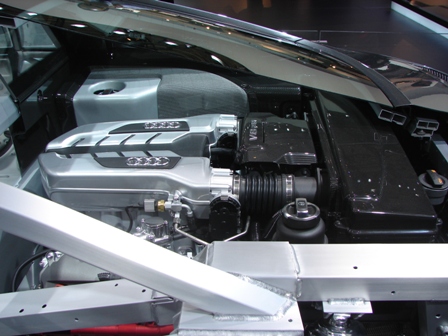
A carbon-fiber airbox sits behind the engine, placing it under the backlight and in public view. Twin electronically-controlled throttle bodies are assigned with the task of feeding the large plenum and tall tunnel-ram intake manifold.
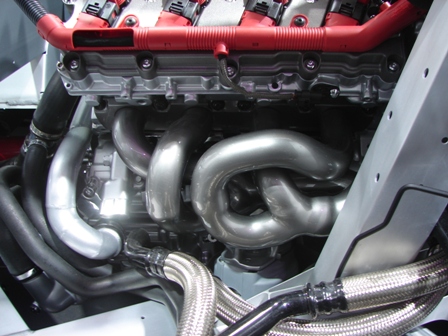
Visible here is one of the beautiful tubular headers, which appear to utilize a "tri-Y" 4-2-1 configuration. Mounted behind the header is what appears to be a scavenge pump for the dry-sump oiling system.
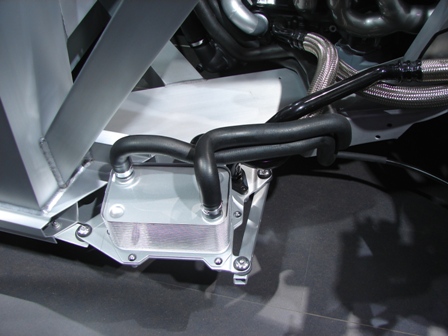
That engine oil is then cooled by this heat exchanger, located under the left "sideblade". Note its isolated mounting platform.
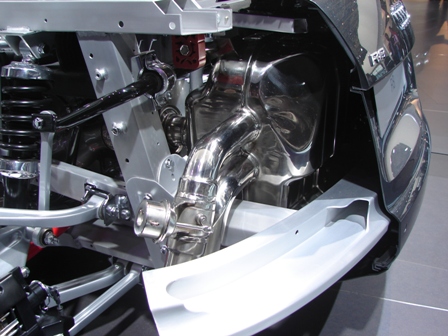
The lovely header then flow through catalytic converters before dumping into the muffler, which is located between the transmission and rear fascia. It appears to have a substantial amount of volume, which is probably required to effectively silence the high-performance V8. Also note the size of the rear bumper support.
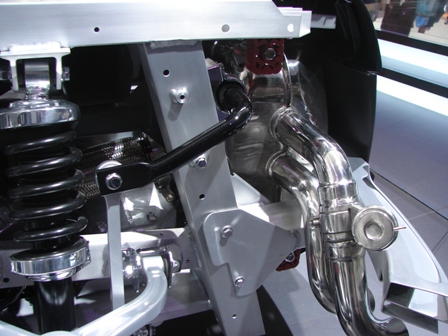
It appears that the outer of each of the exhaust outlet pairs incorporates a vacuum-actuated bypass valve. Expect this car to announce its presense with authority at wide-open throttle.
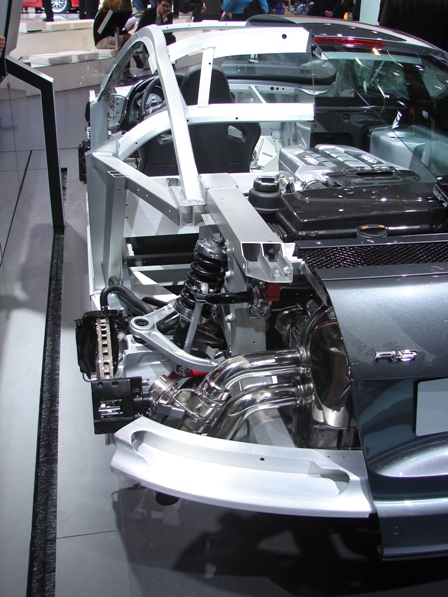
Indeed, the R8 is every bit as lovely on the inside as it is on the outside, and we're delighted that Audi decided to expose that to the public.
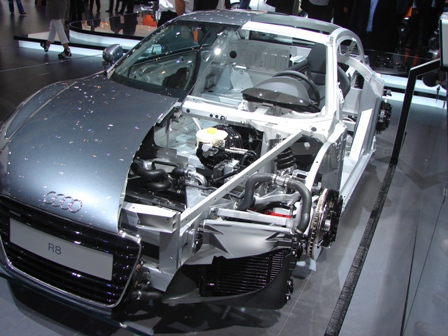


Sign in to post
Please sign in to leave a comment.
Continue